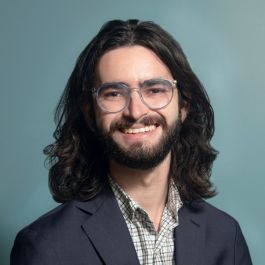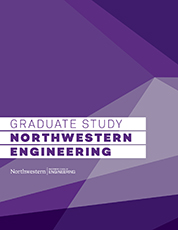Roni GreenbergService Designer, Kaiser Permanente

Alumni Interview
"All the group work in EDI was great practice for teamwork in industry."
Tell us what your current title is and what your role entails.
I am Service Designer working on Kaiser Permanente’s national care delivery portfolio. My team is the Care Delivery Technology Services, Consumer Experiences – Experience Strategy team. I know, a LOT of words. My team designs the ideal experiences for KP products and services, including things like video visit experience, hospital telehealth technology, mental health care integration, etc. My team uses the titles Service Designer and Experience Strategist interchangeably. I do research with patients and clinicians to design the end-to-end services and strategically map out how to get there. We work in requirements, playbooks, and insights – we don’t design visuals. We serve as the voice of the patients and clinicians, and have to reconcile differing needs from each of KP’s different regions. We carefully plan staged releases for our services while keeping the end users front of mind. We work with leadership, business partners, and product teams to socialize these projects, catalyze change, and build out services.
When you started EDI, did you know what industry you wanted to work in?
I was pretty certain I wanted to work in Healthcare, but was open to other industries. Ultimately, I knew I wanted to design for impact and was open to industries like sustainability or public infrastructure, but was always most passionate about designing in healthcare and didn’t waver. Through experiences over a range of classes, I was able to really refine what my design niche was – end-to-end service design within Healthcare vs. UX design or designing medical devices. While I sometimes miss the opportunity to be visually creative in my work, the knowledge that I am working on services which improve peoples’ quality of life in meaningful ways is more important to me, and my values, than personal enjoyment from designing visuals. I have found ways to incorporate visual creativity into my life outside of work, and am thrilled with this balance.
Tell us about an EDI course that made an impact on you.
While it is hard to pick just one, but I think ultimately Design Strategy with Professor Holderfield had a profound impact. I have found that designing within an organization as large as KP, which is actually made up of quite a few different business entities, requires the ability to juggle a wide range of needs. While my team is the voice of KP’s members and clinicians, we are in conversations daily with business leaders, regional representatives, and product teams. We are tasked with considering the big picture while still advocating for the consumers which use KP’s services. I use the skills developed in Design Strategy to synthesize our research into overarching product strategies, composed of experience requirements which have been prioritized into phased rollouts.
What is one lesson you learned during your EDI journey that has stuck with you?
I think the most impactful piece of advice I received was to not take personal favorites when designing solutions. So often we gravitate to the ideas we personally came up with. I know I am guilty of this at times. To put your ego to the side and evaluate what is best for the humans you are designing for is a necessity when doing service design and strategy. I think this went hand in hand with all the group projects we did during EDI. Groupwork was not always easy. Each member of a team is a human being with their own priorities, biases, and preferences. Design requires collaboration, and collaboration requires the ability to put human needs above our own personal desires. At work, you have no option but to work though your differences. Ultimately, all the group work in EDI was great practice for teamwork in industry.
What was your EDI thesis project and what inspired you to pursue it?
I decided to ask the question “What if we treated cell phone addiction like a chemical addiction?” This led me to design Intermission, a tool which helps people reduce their phone usage by addressing underlying mental health factors which shape their relationship with their phone. Intermission helps people understand how their mental health impacts their phone usage, and works with them to identify healthier alternatives with the ultimate goal of empowering users and help them break free from the cycle of high phone usage and declining mental health.
I was careful to work on a thesis that both was relevant to the healthcare space while also giving me deeper experience in UX design. Mental health is an area that I am passionate about, and wanted to explore more deeply. I was reflecting on my own mental health issues and cell phone usage, and ultimately landed on the intersection between these two issues.
What advice do you have for an EDI student interested in working in your industry?
I think the best advice is to really try to align your curriculum and projects to the Healthcare space whenever possible. Try to take NUvention Medical to learn about innovation in the healthcare space. I was the only designer on my NUvention project, and it was a great experience in collaborating with medical, law, and business students.
Try to tailor your thesis as much as possible, and try to angle your projects towards healthcare space as well. A few peers and myself did an independent study project with Northwestern Medical. Take every opportunity you can to point your studies towards healthcare.

